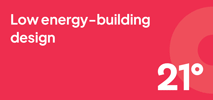Dennis Milligan from the British Flue & Chimney Manufacturers Association gives his view on the ups and downs for the stove and chimney/flue industries currently
The regulatory framework for construction is changing; from the Building Safety Act to the Building Safety Regulator, and National Construction Products Regulator, the Building Regulations Approved Documents are also being revised.
As far as heating appliances and chimneys/flues are concerned, it could be up to five years before the review of Approved Document J (Combustion appliances and fuel storage systems) is published. New product and installation standards for wood burning stoves and flues have also been delayed by the European Commission. In the meantime, up to date information on product standards can be found in guides on the BFCMA website www.bfcma.co.uk
The new Environment Act contains the long-anticipated Ecodesign changes for wood burning and solid fuel stoves. All new appliances must now comply with the new efficiency and emission limits, and appliances placed on the market for sale before 1 January 2022 can still be sold. The Ecodesign limit for particulate matter (PM) is 55% lower than for Defra Exempt stoves – the gold standard for many years. It is encouraging that many Ecodesign stoves produce significantly fewer emissions than the Ecodesign limit, and further emission reductions are being worked on.
Stove manufacturers have employed a number of design features to reduce PM emissions. One of the ways in which they have reduced emissions is to retain the products of combustion in the fire chamber longer before releasing them into the flue. This needs to be factored into a chimney/flue design as this can reduce the velocity and temperature of the flue gases as they enter the flue. Most residential chimneys/flues rely on natural draft, the pressure difference between cold and hot air, to draw the flue gases up the chimney to the atmosphere. A potential reduction in velocity and temperature could reduce the draw of the chimney or flue. A straight chimney is the best solution, but where this is not possible, due the construction of the dwelling, there should not be more than four bends. The angle of the bends should be no greater than 45° from the vertical.
When constructing a new dwelling, the route of the chimney should be thought about at the design stage. It is always advisable to check with the stove manufacturer’s recommendations and the chimney/flue company. BFCMA members can advise on chimney design and installation. This includes using standard software to check that the flue design will create the required draw.
The Ecodesign Emission limits could also spell the end of the traditional open fire, and this could bring about a change for architects who have tended to include 200 mm flues and a standard fire opening in their detached house designs. Architects and developers may now decide to install smaller flue diameters for wood burning stoves. This will also benefit architects in the air loss calculation in SAP. The general opinion is that new open fires will not be able to meet the new Ecodesign emission limits. HETAS, the largest competent persons scheme provider for solid fuel, have advised their installers to check the emissions test results before installing a new open fire. There is still some confusion over decorative solid fuel appliances which are not designed to give heat to the room, like a basket in an open chimney with no restrictions. At the time of writing, it is unclear if they will have to meet the Ecodesign limits.
Stove sales have always been linked to the price of oil and gas, and as the price of oil and gas soars, sales of wood burning stoves are increasing.
The UK’s alternative CE Mark
Brexit has led to the creation of the UK’s replacement CE Mark, UKCA. After a number of false dawns, the UKCA mark will be mandatory in Great Britain from 1 January. As part of the Brexit deal, products sold in Northern Ireland will still have to bear the CE Mark. Both the CE Mark and UKCA mark are particularly important for flues. The UKCA mark confirms that the flue meets all the relevant chimney standards and has been tested in accordance with these standards.
Chimneys and flues are required to discharge a variety of combustion gases. Different types of flue will be required to safely handle the different gases. Linked to the UKCA mark is a user-readable classification system that designates the features of the flue components. The features covered include temperature and pressure rating, fire, condensate, corrosion resistance and distance to combustibles. With stainless steel components, a label showing the classification must go with each flue component so that its specification can be easily verified.
The UKCA mark applies to both flue components and to system chimneys. It is worth pointing out that a CE/UKCA mark for a system chimney applies to the complete flue system, including add-on components like rain caps. The use of components that have not been tested with the flue invalidates the CE/UKCA mark and turns the system chimney into a custom flue.
The BFCMA is the UK’s only Trade Association representing the chimney and flue industry and works closely with Government, public bodies and other organisations to further the interest of the chimney and flue industry. It represents the majority of manufacturers and sole distributors in the industry.
Dennis Milligan is president of BFCMA






